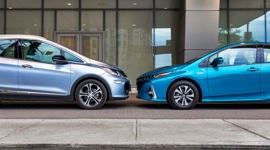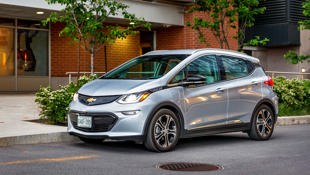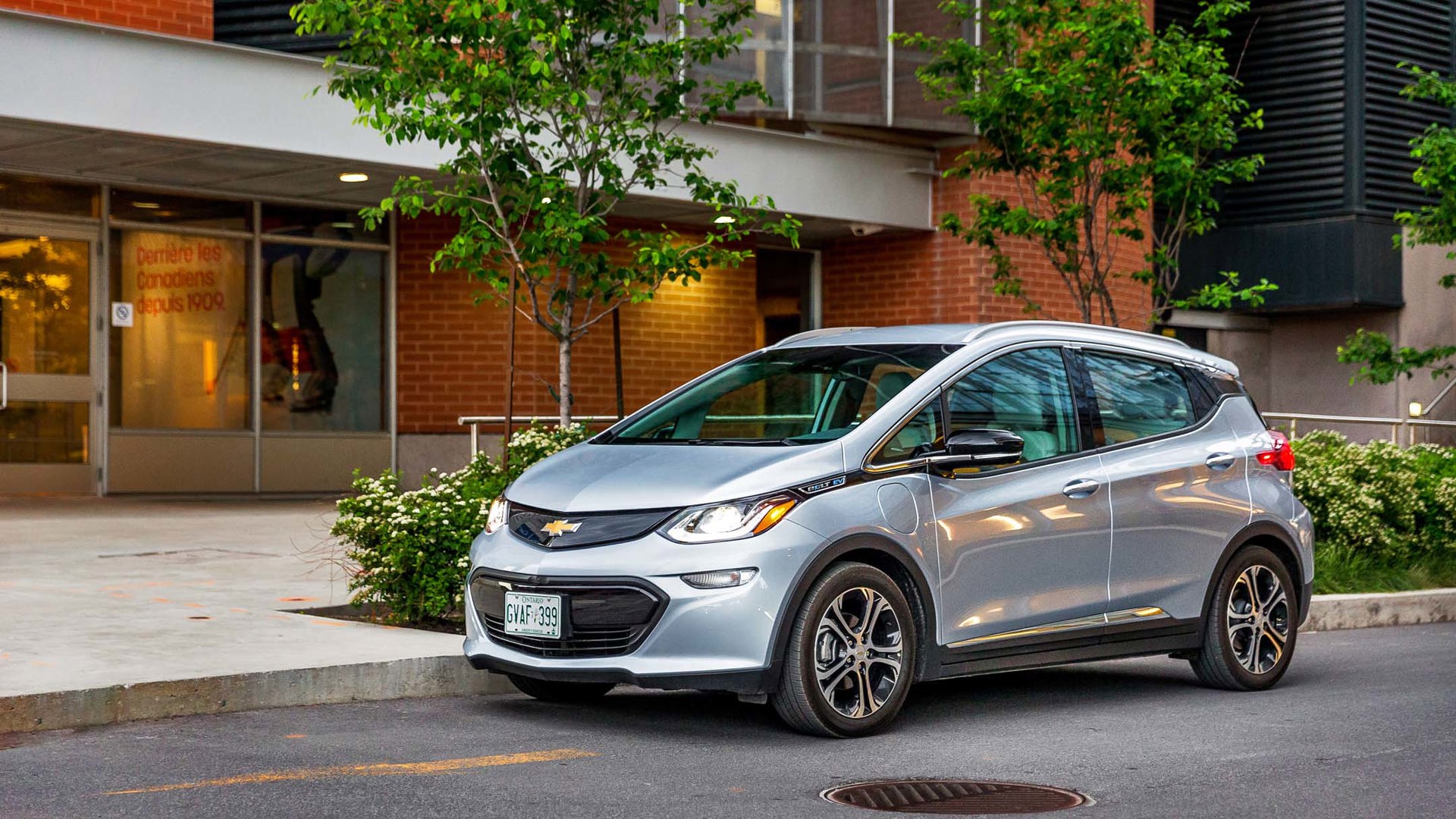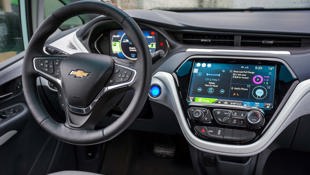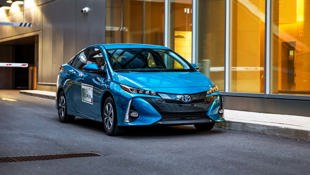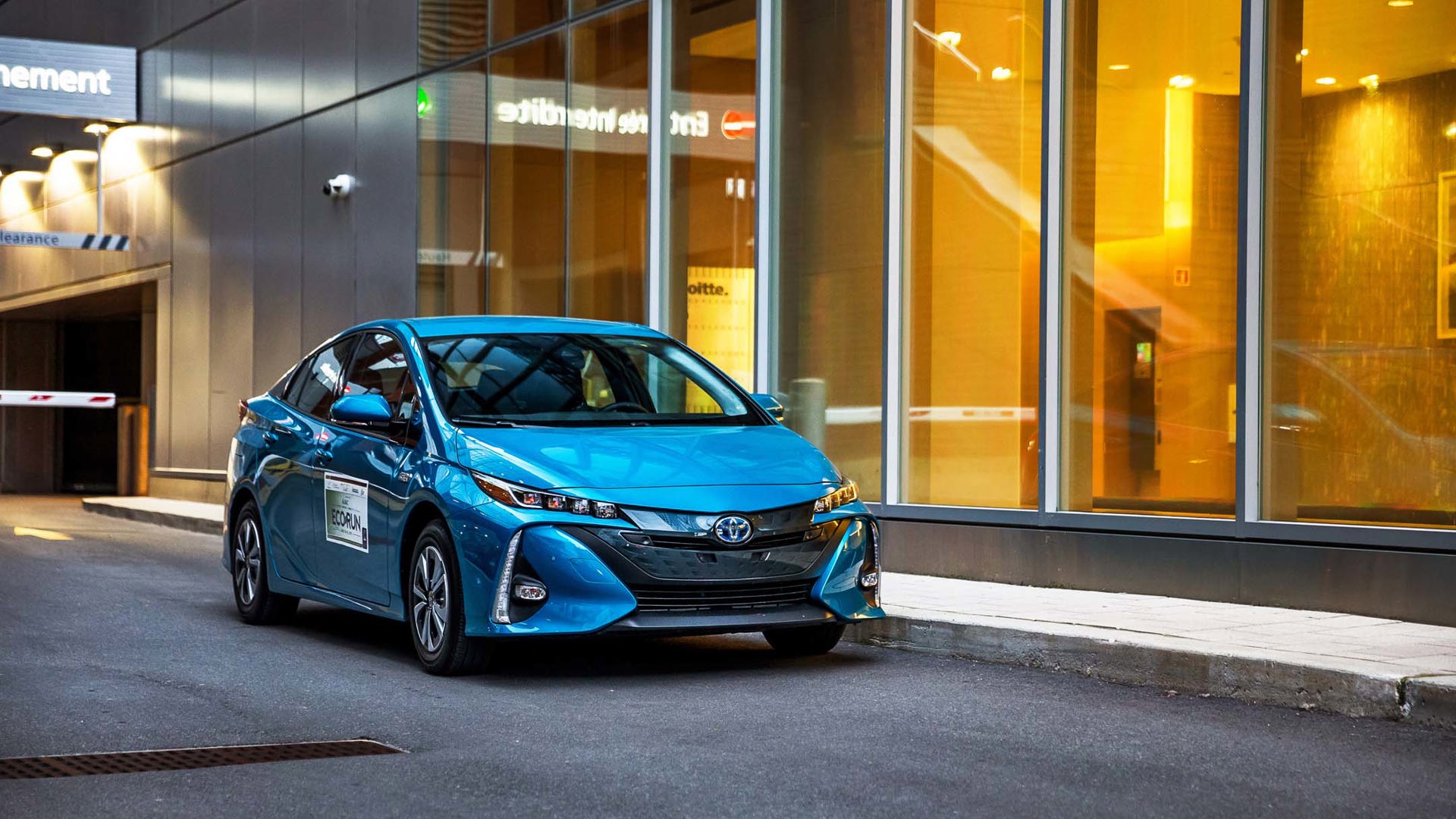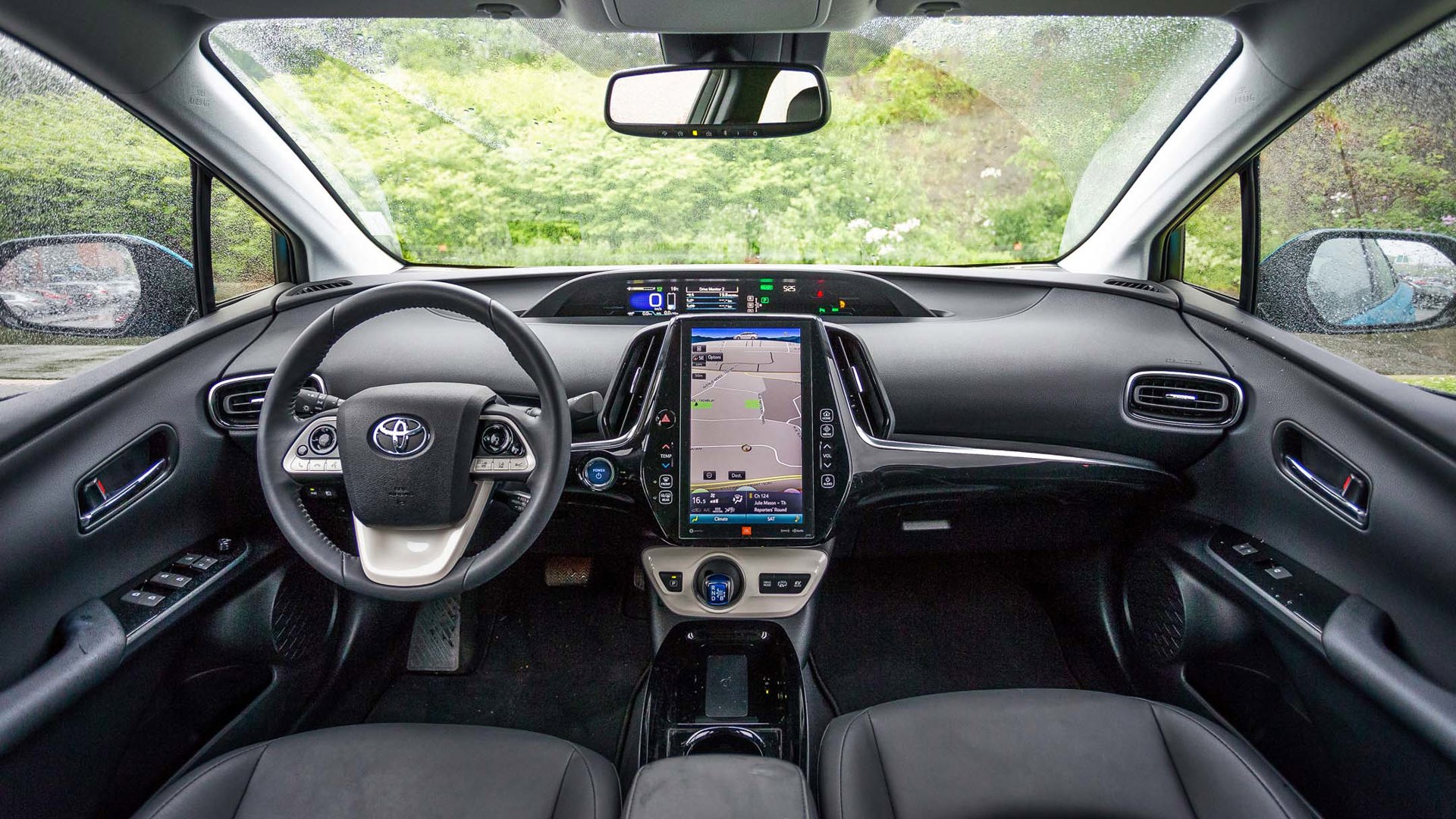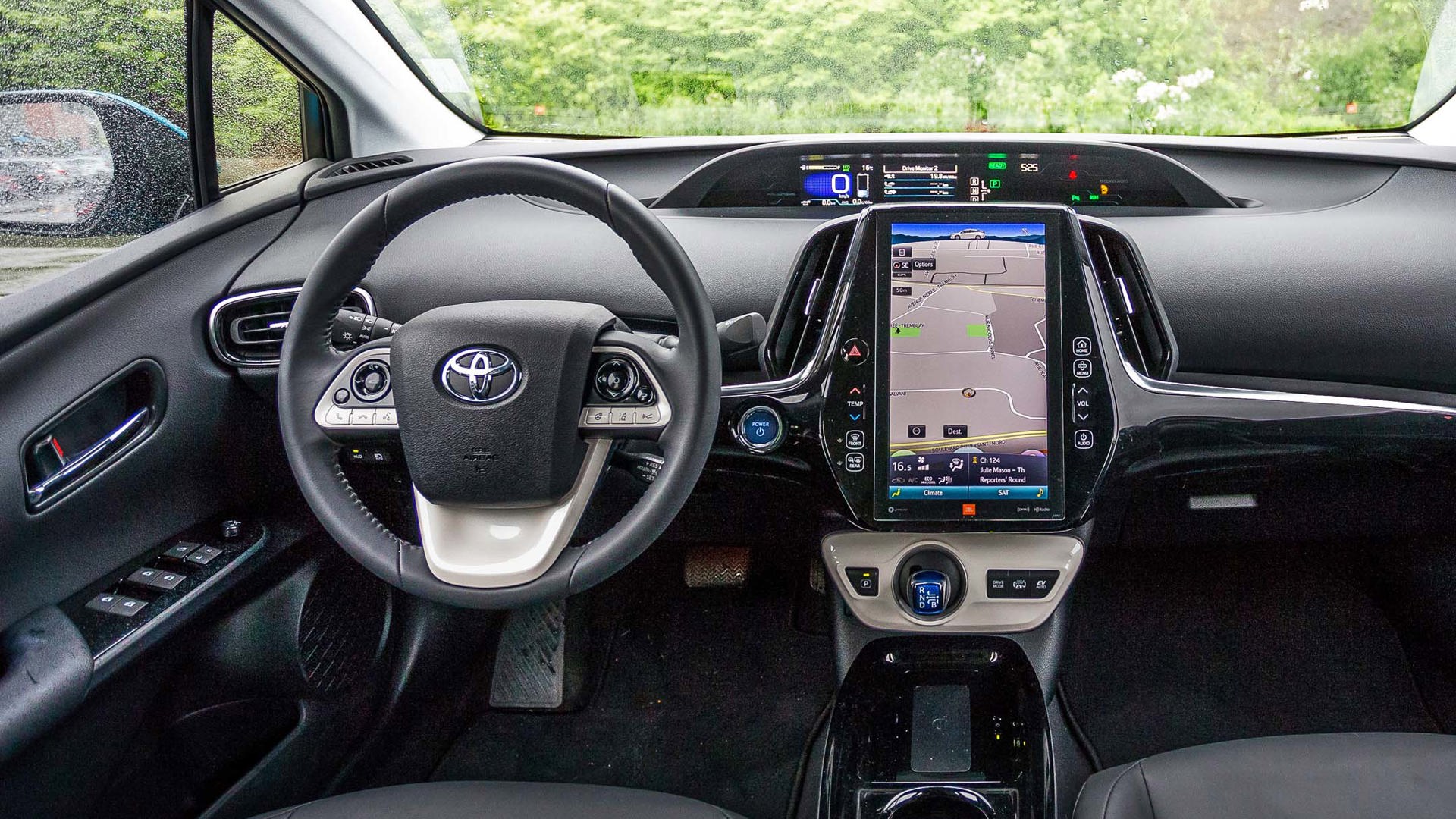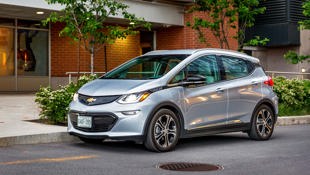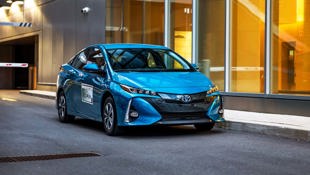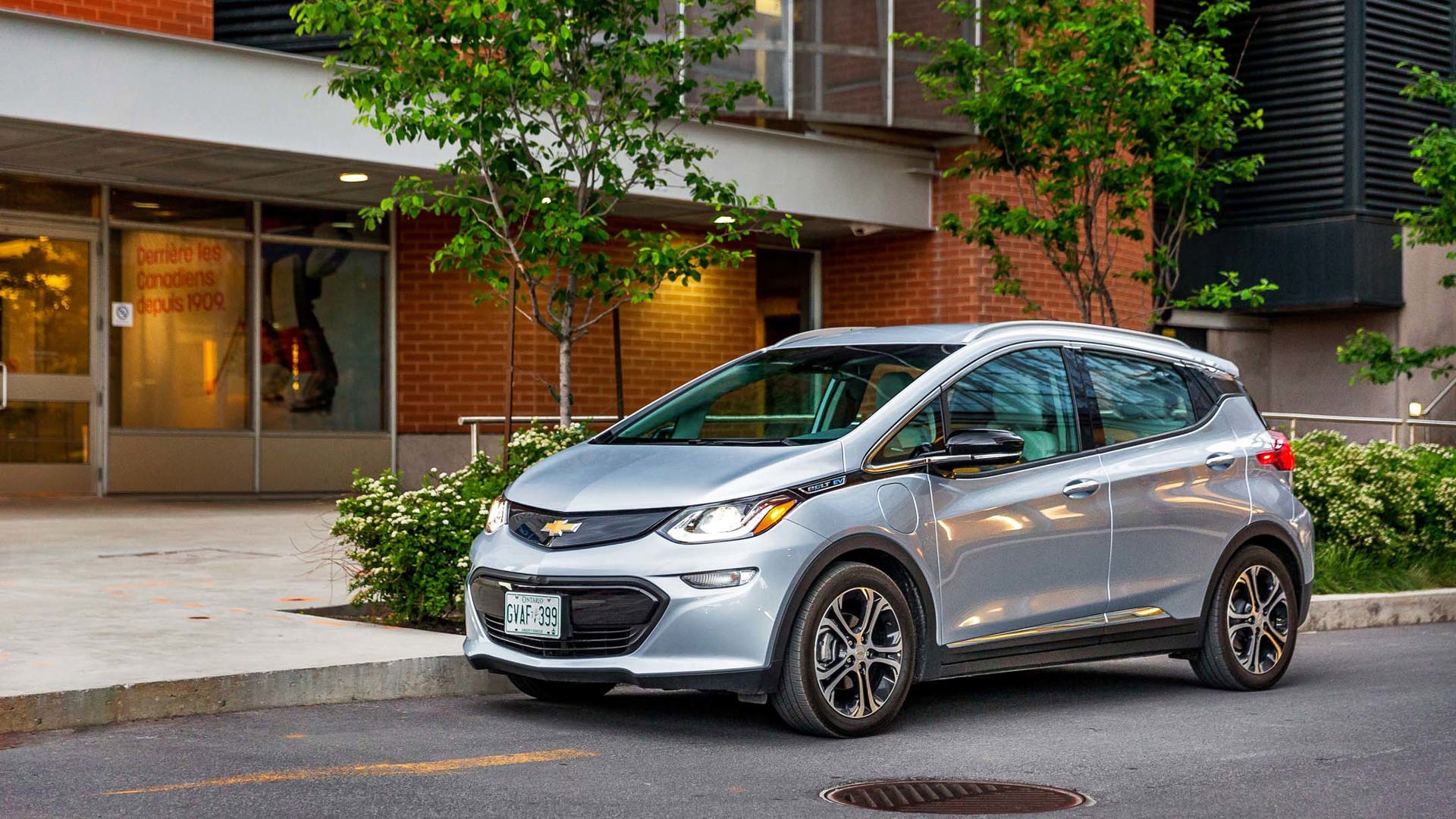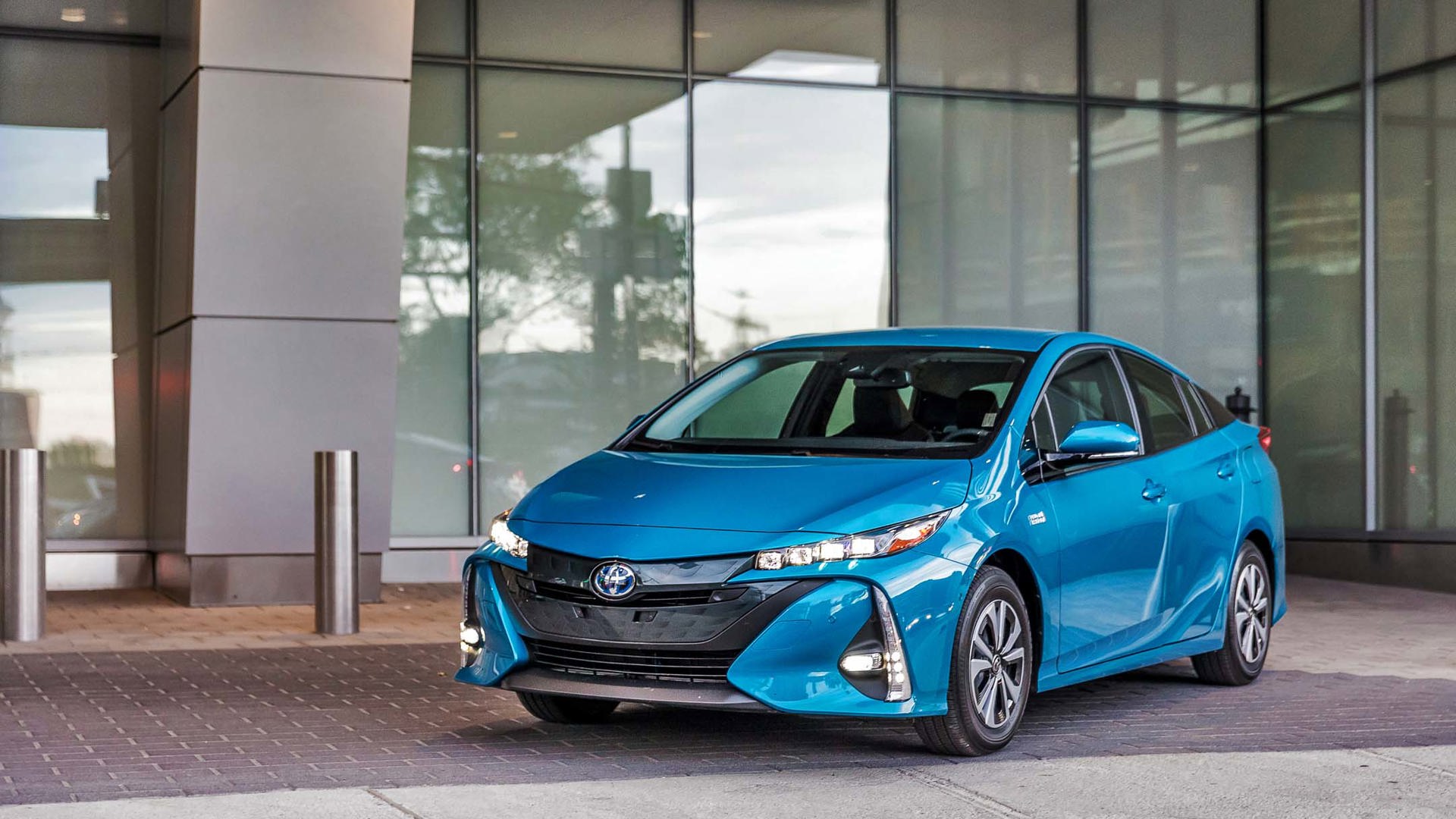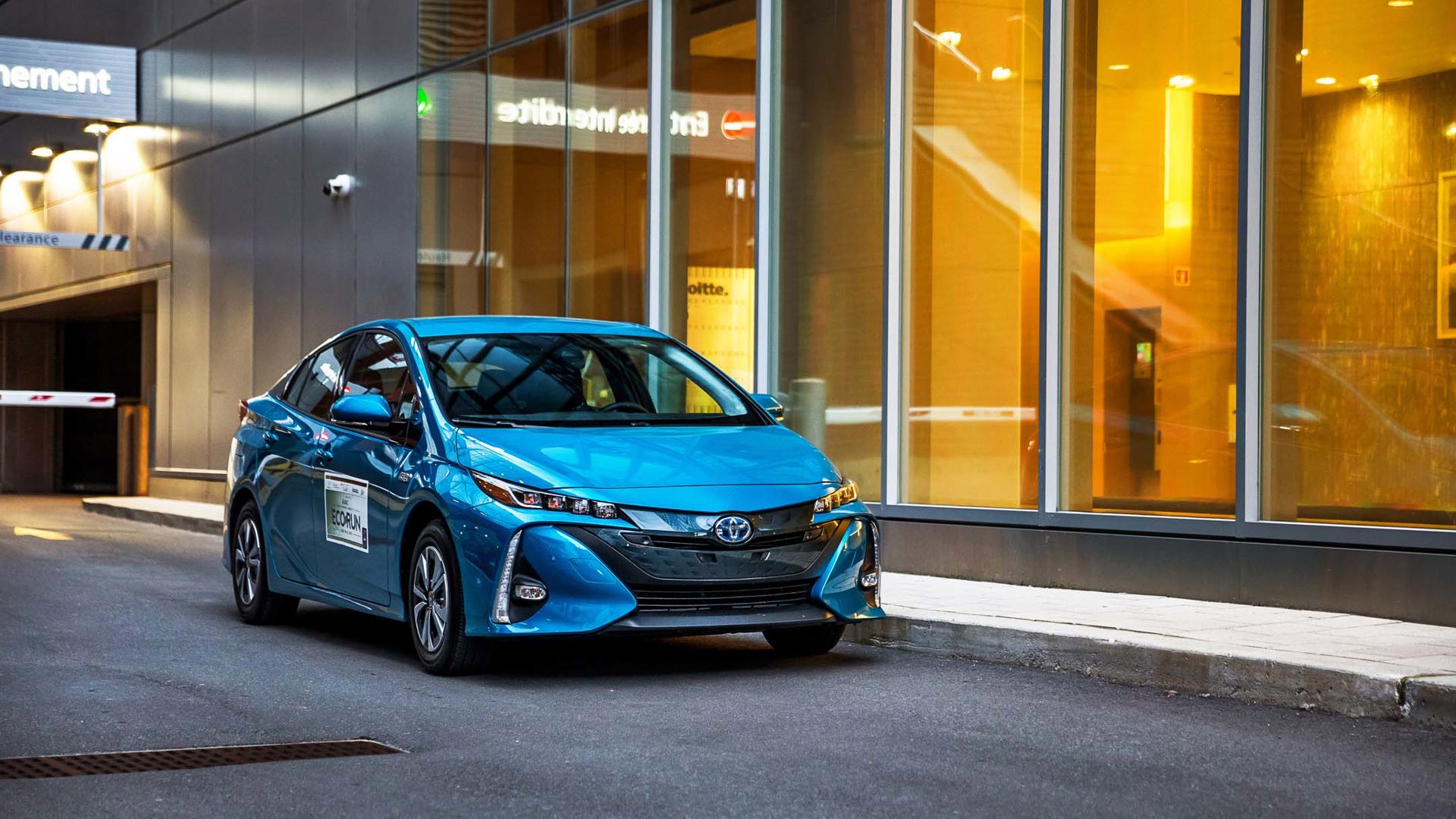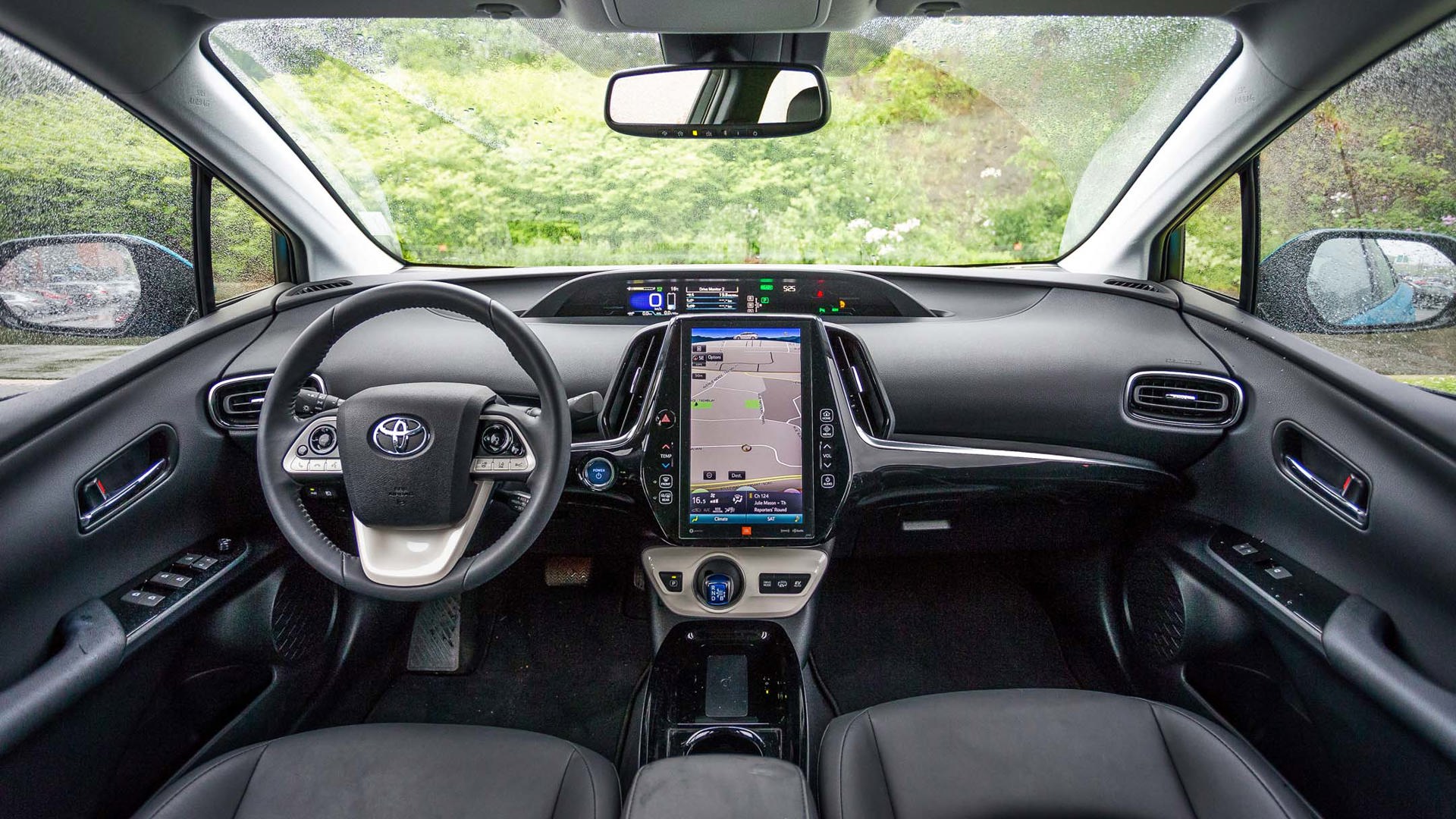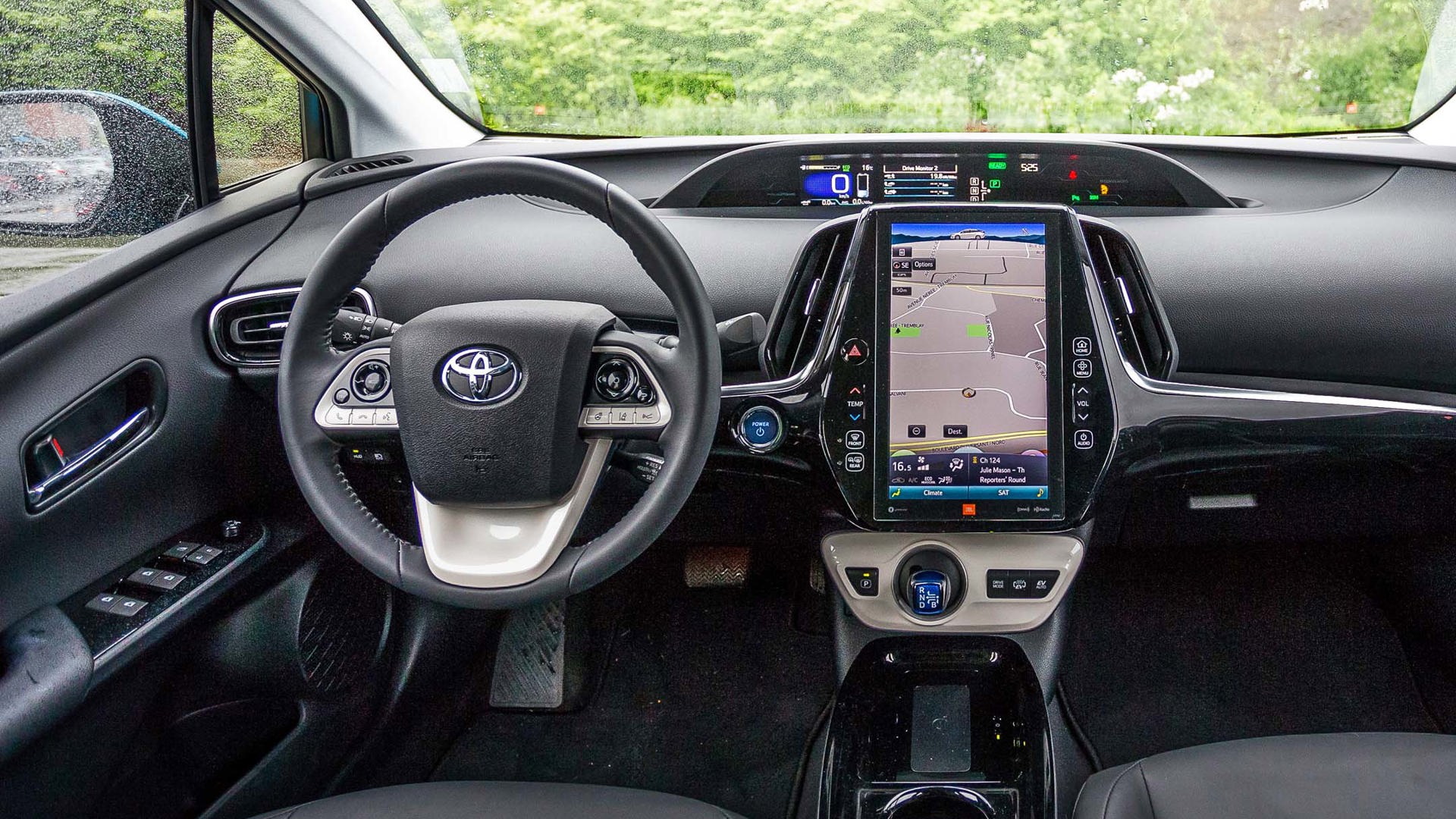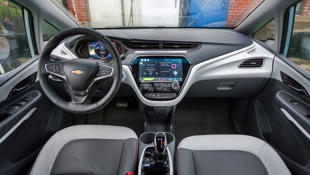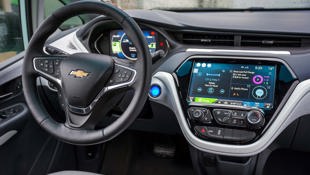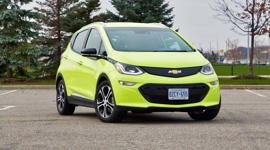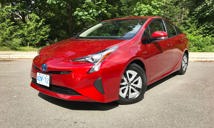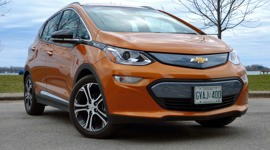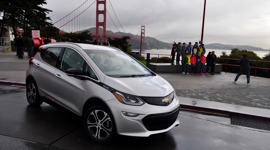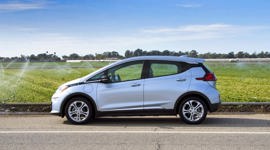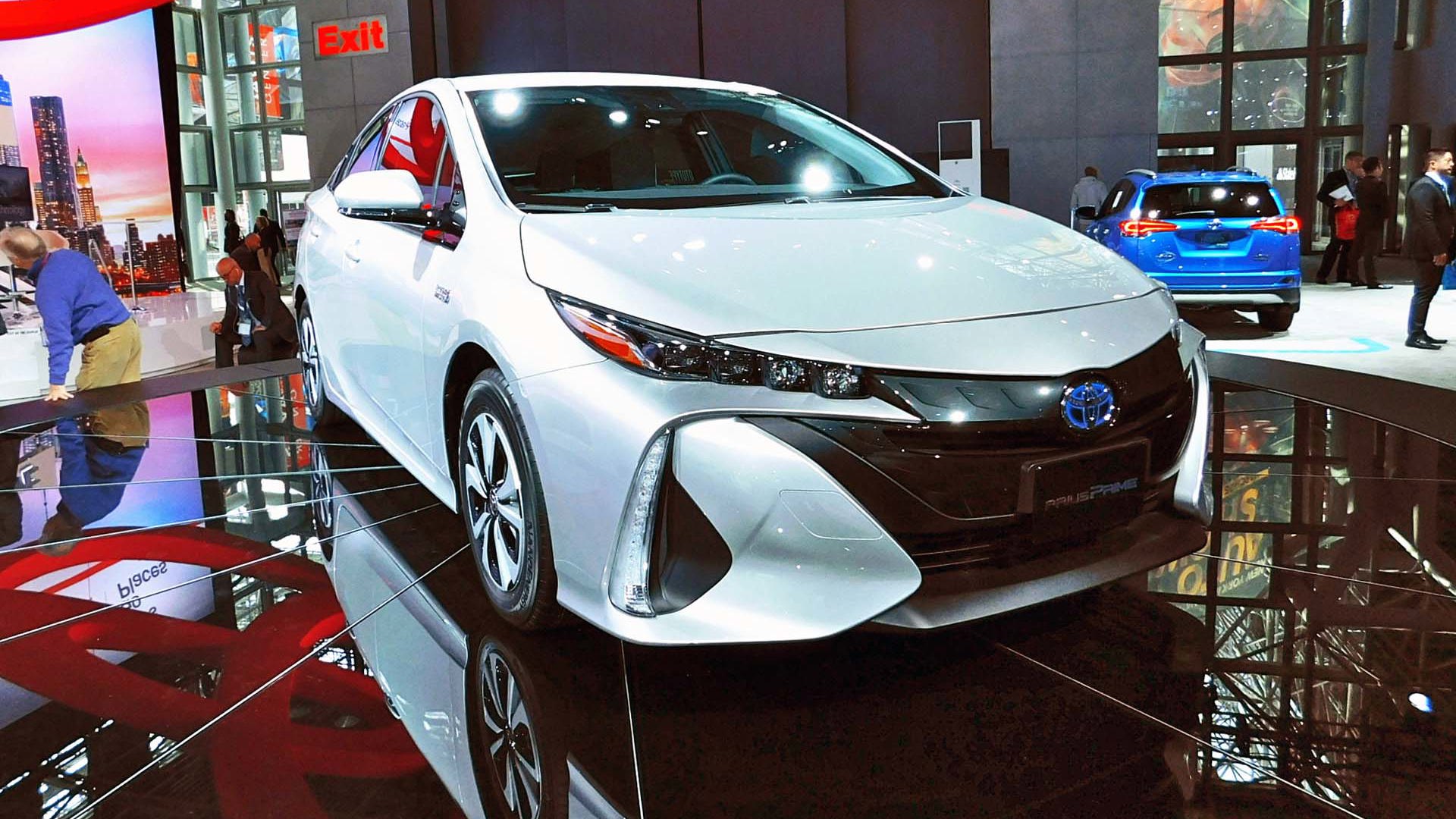Photos by Jordan Lenssen/AJAC
EcoRun creates some unique opportunities. Hosted annually by the Automobile Journalists Association of Canada, the event has showcased some of the most environmentally friendly vehicles available in the Canadian market over its six-year history.
Which is the most practical choice for the day-to-day lives of Canadians – and therefore the most likely to end up in their driveways?
The 2017 edition featured the greenest offerings yet from two of the most forward-looking automakers in the industry: the affordable and range-anxiety-easing all-electric 2017 Chevrolet Bolt, and the newest plug-in option from the company responsible for kick-starting the modern hybrid movement, the 2017 Toyota Prius Prime.
We took these two vehicles for a back-to-back drive to consider which is the most practical choice for the day-to-day lives of Canadians – and therefore the most likely to end up in their driveways.
Availability
The stark contrast between these two vehicles begins with a buyer’s ability to purchase one in the first place.
Toyota Prius Prime - 5/10
After initially announcing that the Prius Prime would be available across Canada from the get-go, Toyota shifted its strategy and opted to launch in Quebec only as of June 1, citing the fact that Quebecers drive more than half of all plug-in vehicles currently on the road in Canada. If that’s where you happen to live and you’re interested in buying one, then you’re in luck: there should be plenty of inventory, and you can pick one up starting at $35,204 all-in before applying that province’s $4,000 rebate. If you’re elsewhere in the country, though, you’ll either have to wait – and for an indeterminate amount of time as no nationwide on-sale date has yet been announced – or shop for something else.
Chevrolet Bolt - 9/10
Chevrolet’s strategy, on the other hand, was to open Bolt sales to dealers across the country through an application process. This means that while the vast majority of roll-out has been focussed on the three provinces with EV incentive programs (British Columbia, Ontario, and Quebec), if you can find a dealer near you who’s selling one then you can buy it, even if you live in a part of Canada where EV infrastructure and support are otherwise thin. It’s a fascinating situation given that the Bolt doesn’t have a gas tank in reserve like the Prius Prime does to make long-distance drives more feasible – but on the other hand, Chevrolet’s approach is the one helping to nudge EVs closer to normalcy. Why shouldn’t this car be available to someone in a remote area who never plans to take it more than a round-trip of 350 km or so from home? If widespread adoption is the goal, then this is what progress looks like.
Powertrains and Range
The ideal match-up here would be the Prius Prime versus Chevrolet’s plug-in hybrid, the Volt – but the latest Volt wasn’t at EcoRun since it’s a couple of years old, and Toyota doesn’t even have a full EV to pit against the Bolt directly at the moment (though it’s said to be coming eventually).
Toyota Prius Prime - 8/10
For those who aren’t yet ready to give up the pumps completely, the Prius Prime offers a compelling compromise. It has a dual motor-generator drive system and an 8.8kWh lithium-ion storage battery that deliver 40 km or more of purely electric driving, while the efficient new Atkinson-cycle 1.8L four-cylinder engine extends its overall range to 1,035 kilometres. The gas engine puts out 95 hp on its own, and the Prius Prime’s total output is 121 hp. It takes 5.5 hours to reach full charge on 120 volt household power and just over two hours on a 240 volt charger. Its NRCan official fuel efficiency rating is 1.8 Le/100 km; I achieved 1.7 with some judicious driving over a 75 km stretch despite it being about 75 percent highway.
Chevrolet Bolt - 8/10
Conversely, for those who do feel ready to make the leap to electric-only, the Bolt makes the best case yet. Its 60 kWh lithium-ion battery pack delivers a much-touted estimated range of 383 km on a full charge while churning out 200 hp and 266 lb-ft of instant torque. Yes, charging takes longer – a full top-up takes over 12 hours at 120 volts, 9.5 hours at 240 volts (which is the highest you can install at home), and 2.5 hours at a 480 volt DC fast charger, the capability for which comes standard for us in Canada, unlike our friends to the south. But once you have a full charge, if you use it carefully and are diligent with the regenerative braking system, you can go a long way. Unlike pretty much every other EV or plug-in present at EcoRun, the Bolt could have waited until the end of each day of roughly 300 km of driving to be recharged. And this comes at a suggested base price of $43,195 before incentives. Any way you slice it, that’s an impressive achievement on the part of General Motors.
Drive Experience
In all the ways that electric cars are beneficial, each of these contenders shows well; they have that instant torque and also both deliver steady handling and smooth drive feel, at least in the conservative environs showcased on EcoRun.
Toyota Prius Prime - 7/10
Of these two products, I found that the Prius Prime gives its driver far less control of and feedback on recovering energy. Basically, how you use the brake affects how much regeneration you gain, and in my short time with the car I didn’t have much luck figuring out exactly how my braking performance was impacting my battery life. I found that the on-board gauges – which are clear, though I personally don’t enjoy having them offset to the upper right of the steering wheel – didn’t make this information immediately evident. There’s B mode, which effectively mimics low gear on an automatic transmission and recovers energy while coasting down hills, but this actually burns energy in other applications and therefore is only marginally helpful. The Prius Prime also locks out electric-only mode when the battery has only 1/4 of its life left, meaning that it takes more planning than it would seem on its face to ensure you use its electrons effectively.
Chevrolet Bolt - 8.5/10
One of my favourite features in Chevrolet’s electric products is the steering-wheel-mounted regenerative braking paddle, which lets the driver actively choose when to apply maximum regenerative braking power. Once you spend a little time with it, it doesn’t take long to get into the habit of driving more or less exclusively with the gas pedal and using most of your braking power to feed back into the battery (though it takes a little longer to figure out how not to disrupt traffic around you while doing so). The gauge cluster also provides excellent feedback on how well this is working, and it’s clear and well laid out to allow for quick information gathering at a glance. I found the driver’s seat position in the Bolt to be by far the more comfortable of the two; the seat moves closer to the pedals and the wheel comes further out from the dashboard, which works well for my short-limbed build.
Styling
While each of these cars benefits from plenty of windows to create a bright and open greenhouse, styling is otherwise the most distinct way in which this comparison becomes a tale of two ideals.
Toyota Prius Prime - 7.5/10
Much of this really comes down to taste, but I find the Prius Prime to be very swoopy and spaceship-like. There’s a lot going on visually with this car, from the floating roofline to the deep rear door and quarter panel stamping and extremely dramatic indentation accent on the liftgate. It feels like it’s trying too hard to stand out and appear futuristic, which is counter to my understated Canadian sensibilities. The inside is a different story, though. I was immediately impressed with the look and the feel of the layout and finish. If you think you’ll ever need a fifth seat then this isn’t the car for you, but if you can give it up then you’ll find the back row to be smartly laid out to create a very pleasant environment for rear passengers. The rear window still features that Prius trademark split design that everyone either loves or loves to hate; here, though, the lower pane is given a darker tint, which goes a long way in reducing the visual confusion created by the stark divide of the rear spoiler.
Chevrolet Bolt - 8/10
What I like about the Bolt’s exterior styling is that it carries on the trend that its plug-in cousin, the Chevrolet Volt, followed in its second generation: it looks much like any other small hatchback on the road. (Chevrolet calls the Bolt a crossover, mind you; I suppose it depends on one’s definition.) There’s still a floating roof, an attention-grabbing side badge, and deep stamping, but all of the lines are straight, parallel, and smooth, creating a nice air of simple symmetry. The inside of the Bolt is the less adorned of these two, though the two-toned theme that carries across the dashboard and the seats is very attractive, and that fifth seat is still available in the second row if needed.
Storage
As it turns out, batteries take up a lot of space.
Toyota Prius Prime - 7/10
The trunk area is broad but shallow in the Prius Prime as it gives up some cargo capacity compared to its Prius badgemates. Its 560 L behind the second row is not great, but not bad for a plug-in hybrid.
Chevrolet Bolt - 6.5/10
The Bolt’s figures are better than those of other all-electric competitors but come up short in this comparison at 487 L with the rear seats upright.
Infotainment and Connectivity
Any way you look at it, choosing one over the other is going to require some sacrifice in the connectivity department.
Toyota Prius Prime - 7.5/10
If you go with the base model, there’s not much at all to see here – you’ll get a 7-inch screen with navigation and built-in HVAC controls, but it’s nothing special. In the Technology package-equipped tester at EcoRun, though, the 11.6-inch high-definition tablet-layout screen stands out as a major highlight. It’s easy to understand and to navigate through, though its sheer size makes stabbing at graphic buttons a bit random unless you’re at a stop. Toyota stubbornly insists on refusing to integrate smartphone apps like Android Auto and Apple CarPlay because the automaker is working on its own, so you won’t find either of those here.
Chevrolet Bolt - 8/10
In my opinion, General Motors is currently rocking one of the best infotainment systems on the market, and the Bolt benefits from much of it. The screen layout and functionality of the features is intuitive, and the button layout makes sense and can be navigated with only a brief glance at most. Both Android Auto and Apple CarPlay are integrated, as is the subscription-based 4G LTE Wi-Fi hotspot. Unfortunately, I had to dock a half point for the fact that my right hand was blocking a third of the screen from my field of vision when I was in my ideal driving position.
Other Features
Toyota Prius Prime - 8/10
Toyota gets a big nod for integrating its Toyota Safety Sense-P suite of features as standard, which includes pre-collision, lane-departure alert, automatic high-beams, and radar cruise control. It also has heated seats and steering wheel as standard. The Technology package adds on wireless personal electronics charging, a full-colour head-up display, parking assist, rain-sensing wipers, and blind-spot monitoring with rear cross-traffic alert. Don’t expect EV mode to last long, though, if you choose to force it while enabling a lot of the more electron-guzzling features.
Chevrolet Bolt - 6/10
In its base trim, adding things like heated seats and steering wheel will cost a little more, and some popular features aren’t available at all unless you shell out for the Premier model, such as low-speed forward automatic braking, lane-keep assist with lane-departure warning, forward collision alert, following-distance indicator, front pedestrian braking, intelligent headlamps, and wireless charging – all of which you’ll have to add through packages (i.e. pay extra for) on top of the advertised price.
The Verdict
Chevrolet Bolt - 54/70
Toyota Prius Prime - 50/70
The scores say I’d choose the Bolt, though that difference is entirely made up in balancing the availability rating, which is likely to happen before too long.
My heart says I’d choose the Bolt – more to be an early adopter than anything else, and only if I had the money to spec it out well. (My home province of Ontario’s generous incentives would help in that regard.)
My head, though, says I wouldn’t choose either of these. From a pure practicality standpoint, what this exercise has taught me is that I’d be more inclined to choose what I see as the most ideal balance and buy a Chevrolet Volt instead. You’d spend less to get more features in the Prius Prime, so if you’re considering the latter and it’s available to you, you should definitely give both a test drive to assess your own tastes. For me, the Volt gives me the styling and connectivity features I like with a slightly less but comparable combined range to the Prius Prime and more intuitive regenerative braking – and, similarly, a gas tank left in reserve to combat range anxiety, which I’m not feeling quite ready to deal with just yet.
If you do feel ready, though, jump confidently into the Bolt. Early signs indicate you won’t be disappointed.
